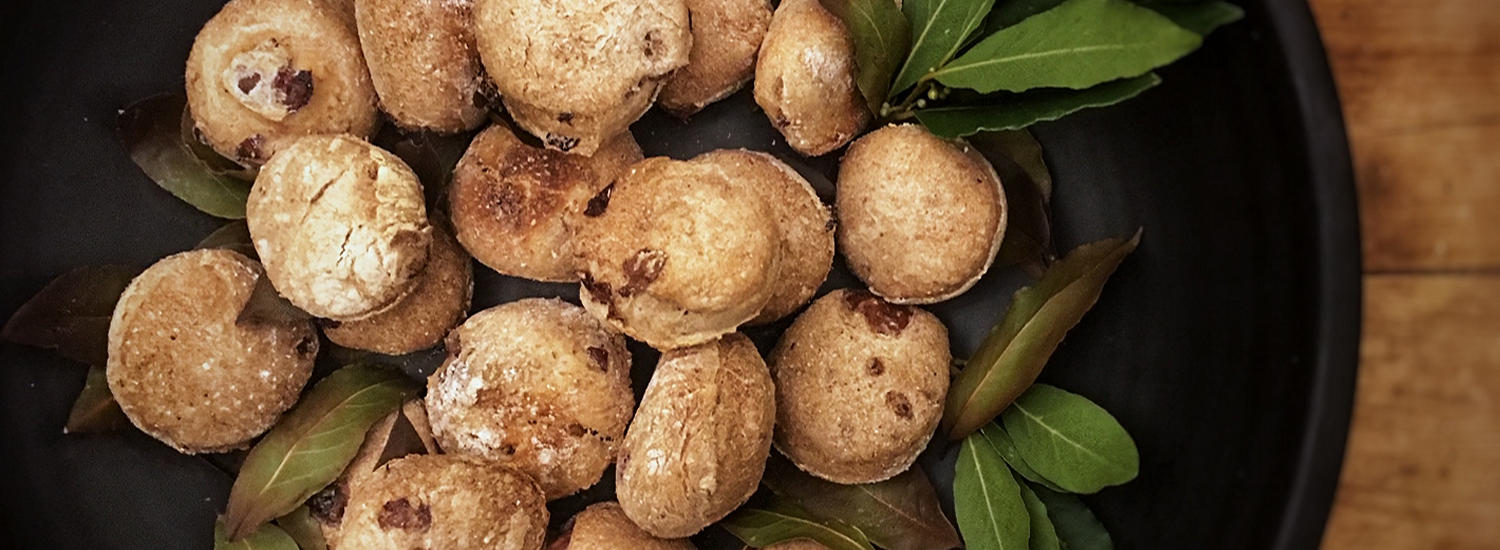This online class is tailored for young apprentice pistores trying their hands at Roman baking for the very first time!
Join archaeologist and University of Leicester alumna, Farrell Monaco, to find out about bread and bakeries in ancient Rome, and then learn how to make a 2,000-year old Roman bread recipe as described by Cato the Elder.
Ingredients:
- 500 g table or wine grapes
- 400 g of whole wheat flour
- 100 g of strained ricotta or strained cottage cheese
- 235 g of water on reserve
- 5 g cumin
- 5 g anise seed
- 5 g salt
- optional: 65 g bread starter or 10 g granular bakers yeast or yeast cake*
*if using yeast, your dough will have to rise for several hours before being baked.
- Bay leaves
Implements:
- Mixing bowl
- Rolling pin
- Round biscuit cutter
- Baking sheet
Instructions:
- Crush the grapes fully by hand. Keep the pulp and juice in the bowl.
- Mix the ricotta into the grape pulp.
- Optional: Add bread starter or granular yeast.
- Add the flour, salt, cumin and anise to the mixture.
- Knead and fold the mixture together.
- Add additional flour or water if you need it.
- Cover and let the dough rest for 30 minutes (if you used starter/yeast let it rest until it doubles in size).
- Place 20 or so bay leaves on the baking sheet.
- Dust your cutting board with flour and roll out your dough with a rolling pin.
- Use the cutter to cut out the loaves. Place each loaf on top of a bay leaf on your baking sheet.
- Bake your loaves on 200 degrees Celsius for 30 minutes or until they are bronzed and firm.
- Let the loaves rest until they are cool.
- Present and serve as you like.
- Remember, before you eat them remove the bay leaf from the bottom of the loaf. This was to add flavour when cooking and is not to be eaten.
- Dipping the loaves in olive oil will bring out their savoury flavour, whilst dipping them in honey will bring out their sweetness. They are also good with butter, cheese and ham!
For more experimental archaeology and ancient Greek and Roman recipes visit Farrell’s website:


One thought on “Baking with the Romans”